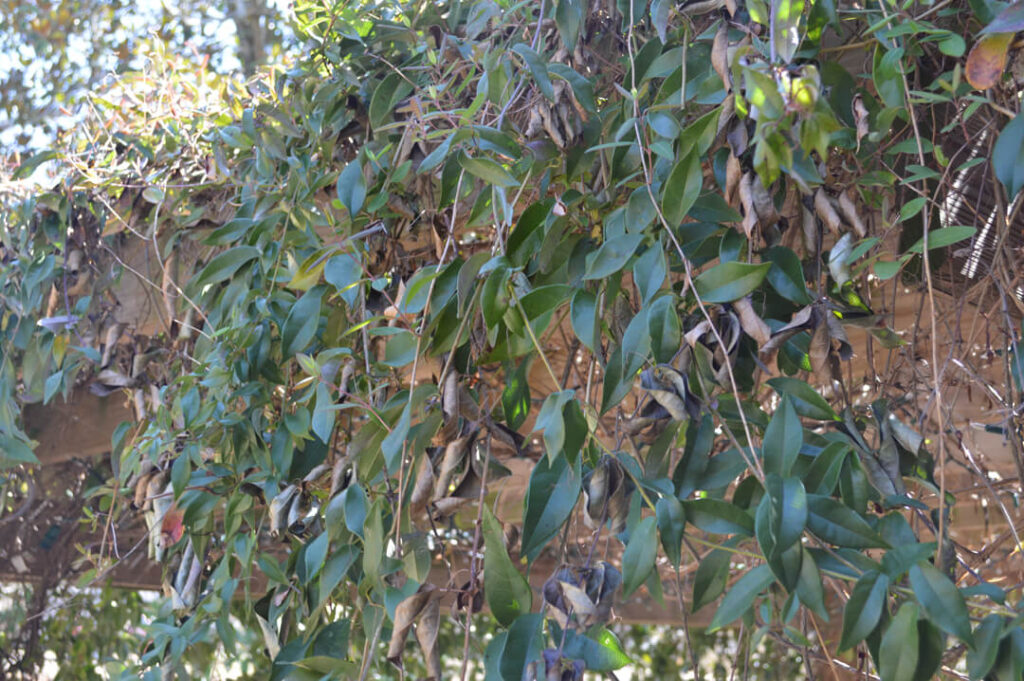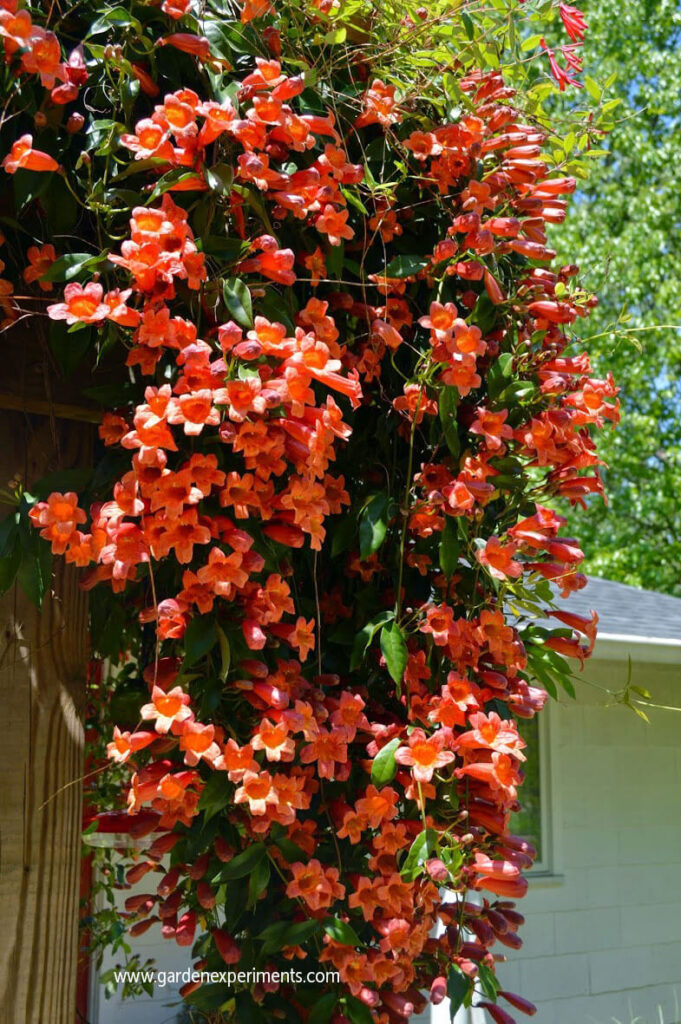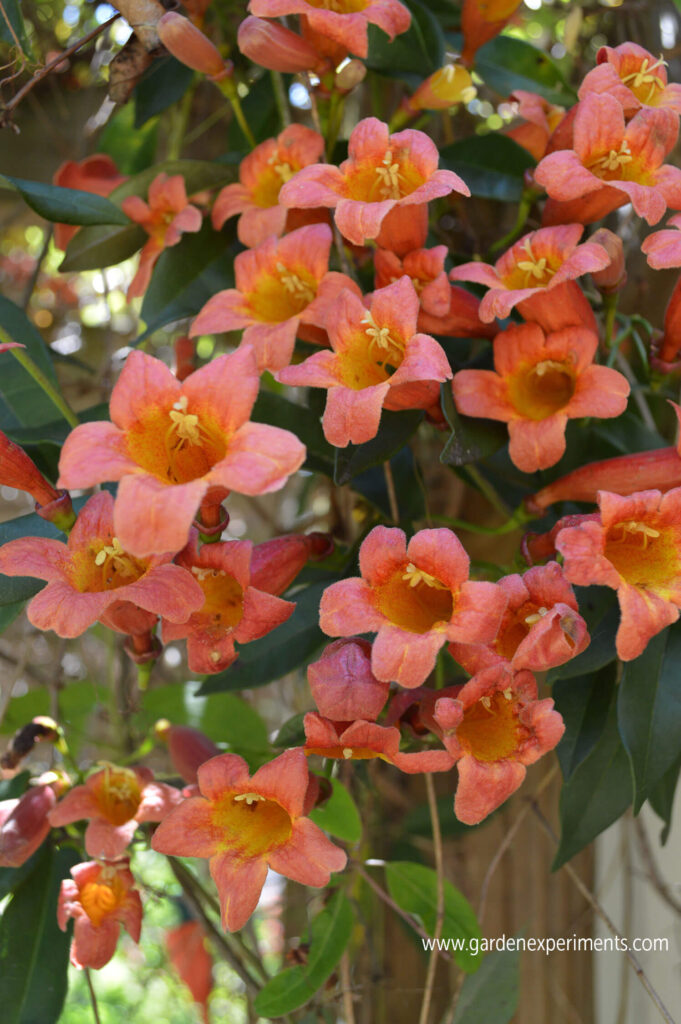As a native plant, cross vine has a big advantage – it’s easy to grow, hardy, tolerates the heat, has a low water requirement, and can grow in both full sun and part shade.
It’s in the same family as trumpet creeper (Bignoniaceae), and the flowers are very similar – trumpet-shaped, 2″ long tubular, and bright orange-red/yellow. Cross vine is native to the Southeast from Florida to Texas and up to West Virginia: Zones 5-9.
It’s a prolific bloomer and blooms in early spring throughout the summer and sometimes into fall.
Another great thing about this vine is it is semi-evergreen. The leaves on the vines that are on my arbor survived winter temperatures of 9 degrees this year. It’s nice to have a constant green cover on the arbor.
The only drawback of this vine is that it is a fast grower and will require a couple of trimming/trainings a year. The opposite leaves appear waxy, and the vine produces tendrils to assist it with climbing trees, walls, and trellises.
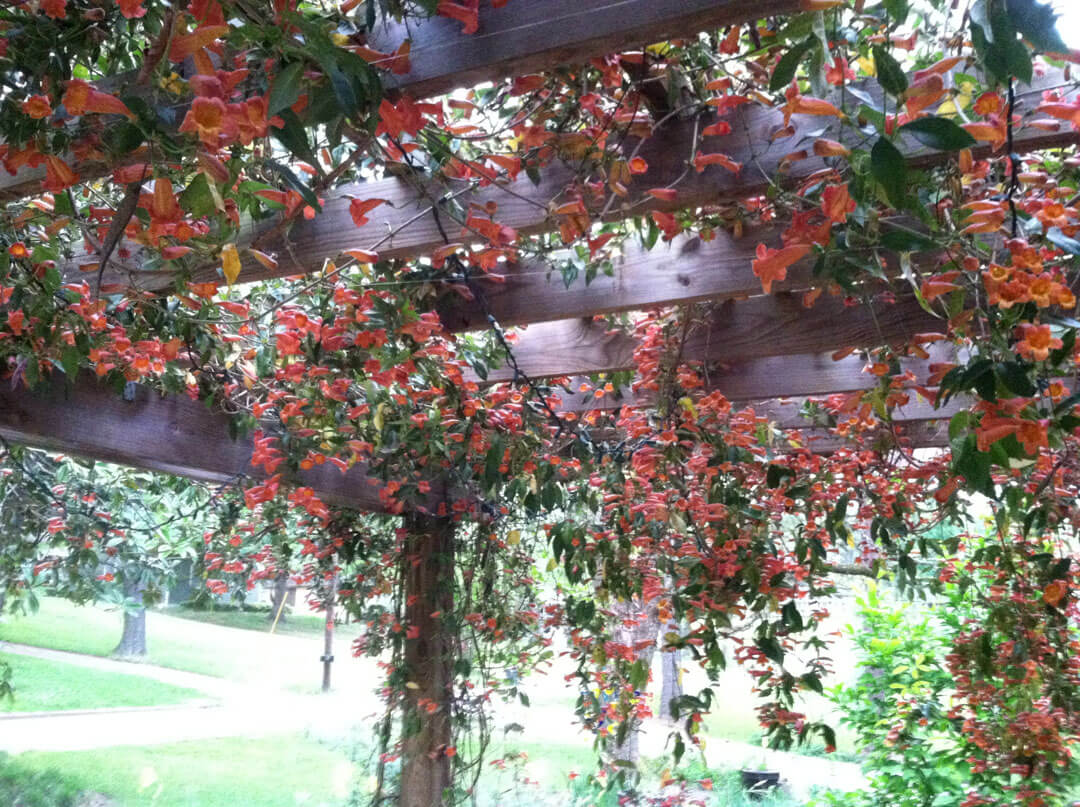
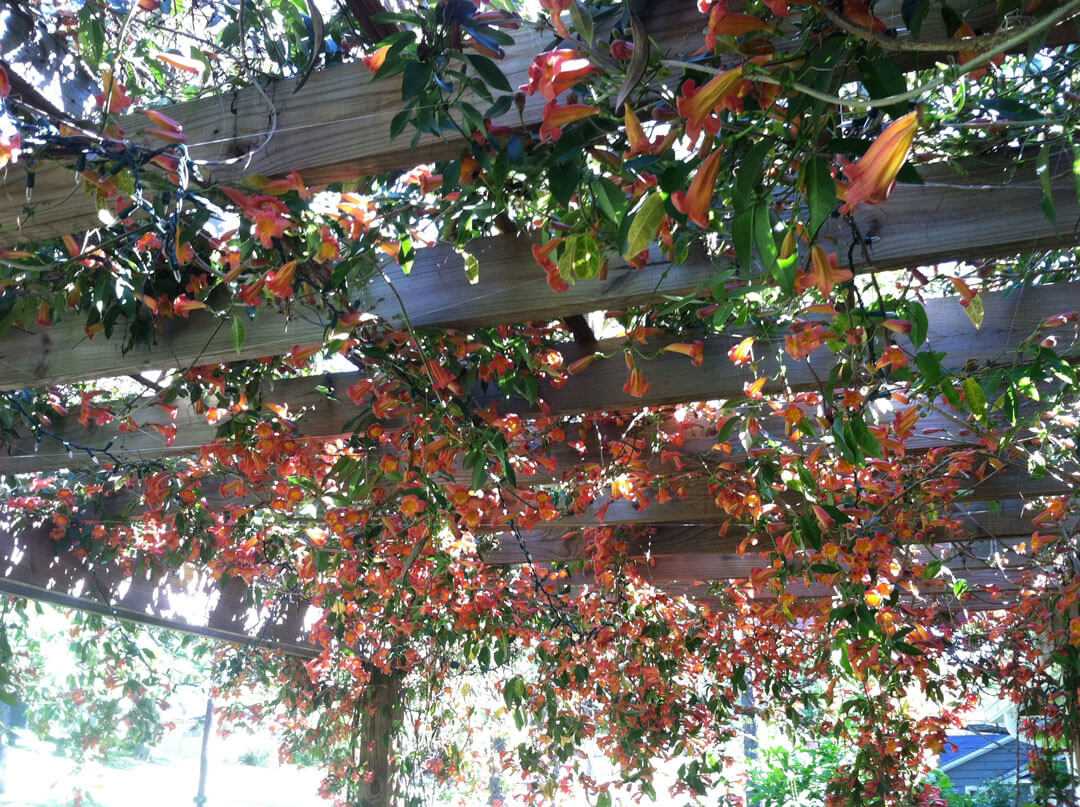
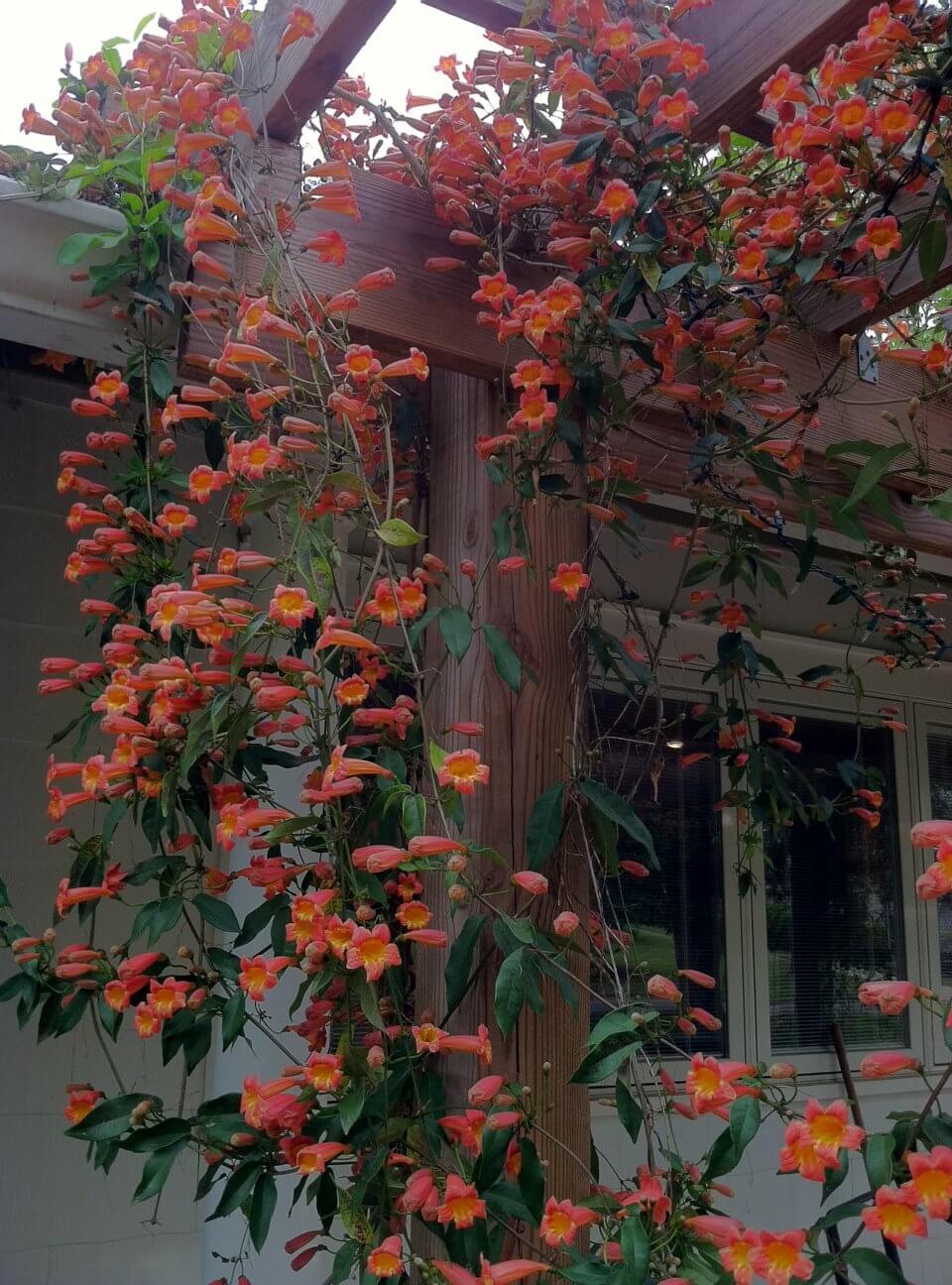
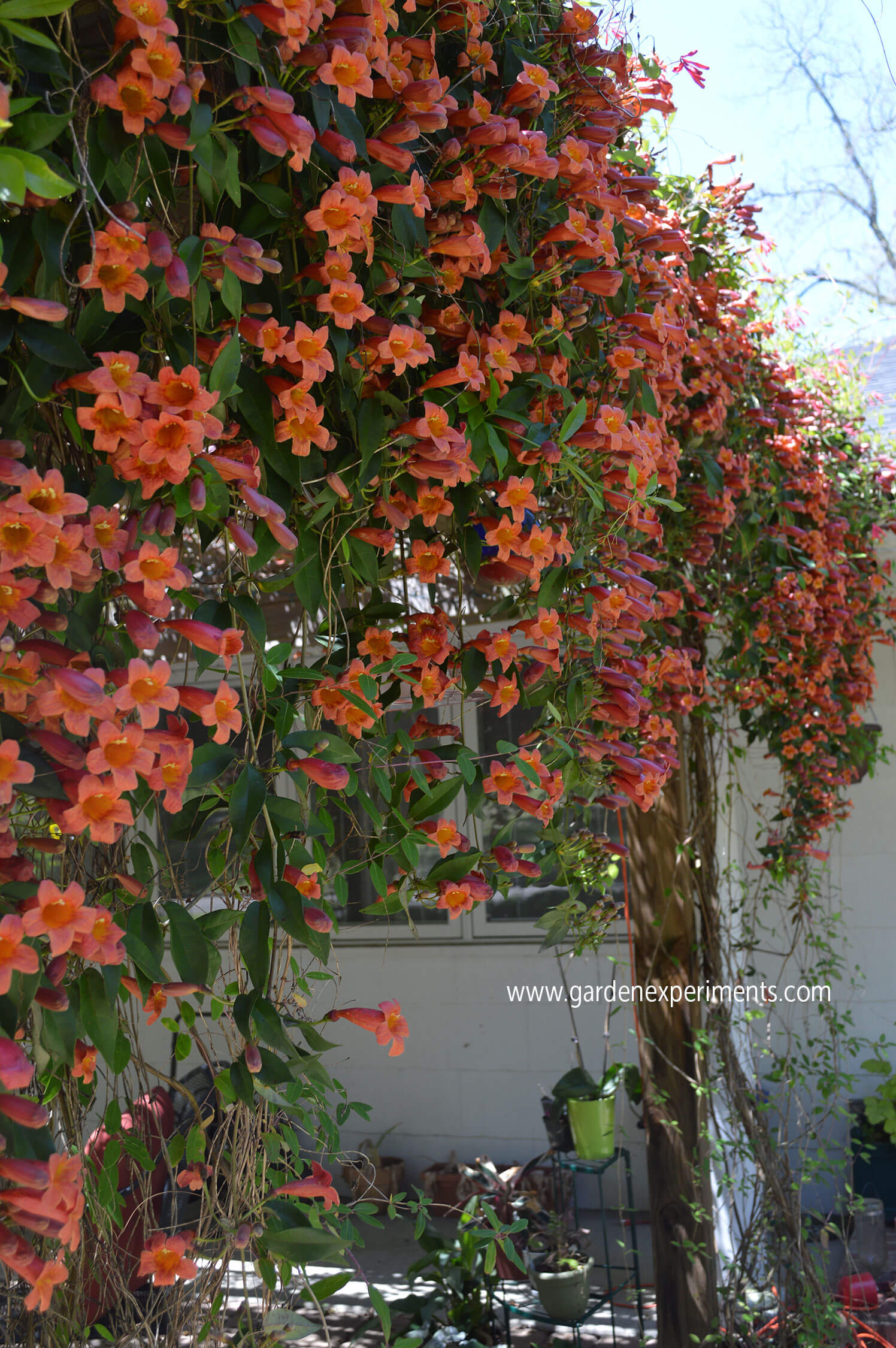
How to Grow Crossvine
While you can plant it in both part shade and sun, you’ll get more flowers in full sun. It tolerates a wide range of soil types, so you should be able to plant it almost anywhere.
Water it while it is young to get it established, but once it is established, it has low water requirements. The vine is both heat and cold tolerant, and it’s perennial. However, in many locations, it will be evergreen.
Be sure to actively train the vine to grow where you want it to and cut it back from places when needed. You can take these cuttings to make new vines!
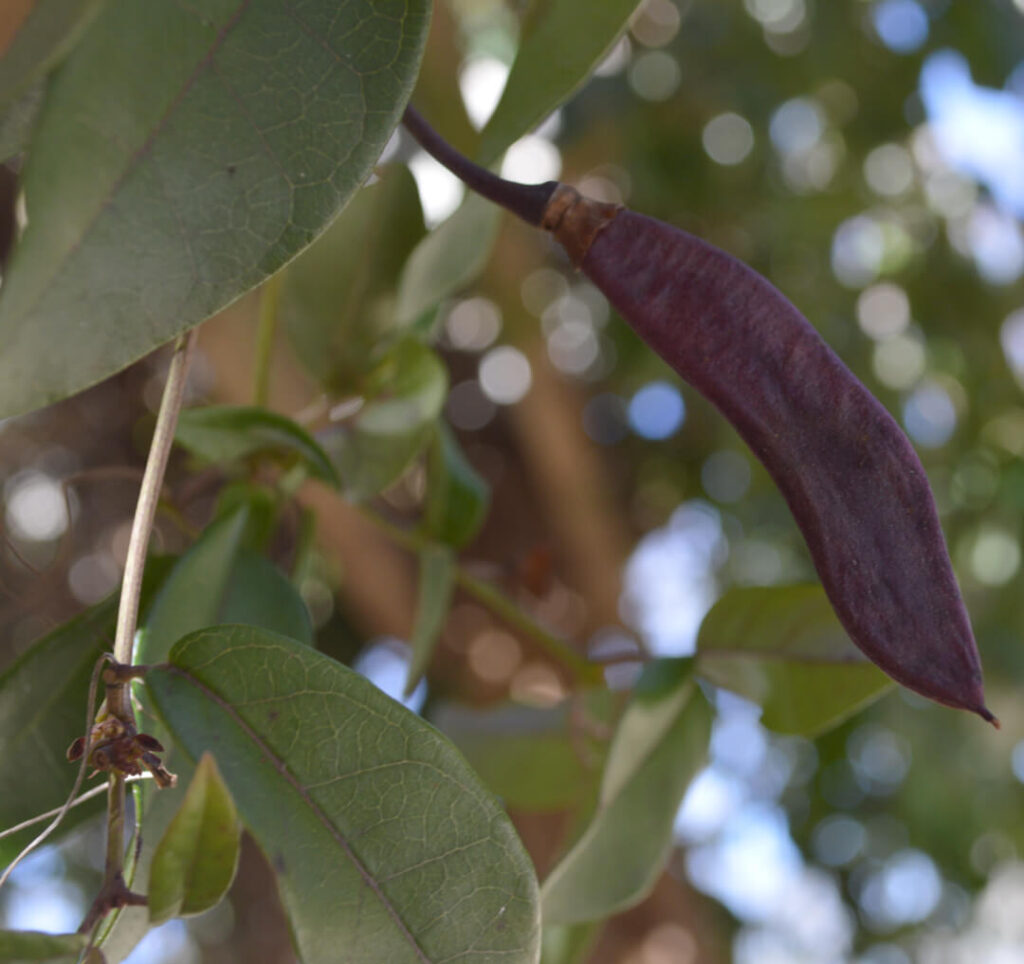
Propagating Cross vine
Crossvine can be grown from seed, cuttings, or root cuttings. Seeds should be collected when the pods appear light brown and dry. They can remain viable for up to a year if kept in a sealed container in a refrigerator.
Root cuttings should be immediately planted, watered, and protected until established.
The same goes for softwood cuttings. Protect these cuttings from drying out and the harsh sun until they are established. The cuttings will do best if started in June or July and may take up to 8 weeks to produce roots.
Wildlife Value of Crossvine
Hummingbirds and bees are attracted to crossvine, and it is an early source of nectar in the spring. I have noticed that the crossvine on my arbor has become thick enough to create a small specialized habitat for lizards, insects, and other small creatures.
I am always careful to wear gloves and make plenty of noise to warn the critters when trimming the vine back.
Interesting fact
The USDA plant profile describes the source of the name cross vine. If you cut the stem and look at a cross section of it, the pith (the middle part of the woody vine) is in the shape of a cross. I always wondered where the name came from.
